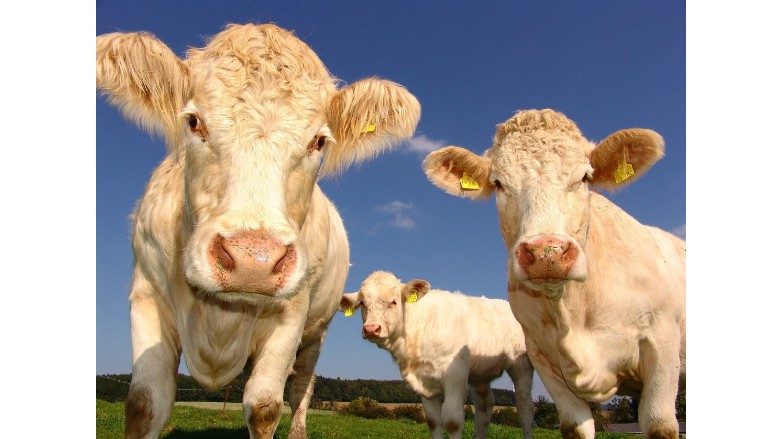Revolutionizing Cattle Health: LSU’s Breakthrough BRD Vaccine Set to Transform the Industry

The cattle industry is on the cusp of a breakthrough by developing a new vaccine against bovine respiratory disease (BRD). This development could save the U.S. cattle industry $1 billion annually. Dr. Shafiqul Chowdhury of Louisiana State University’s innovation represents a significant advance in veterinary medicine, food with implications that extend far beyond the financial.
BRD and related viruses have long been a scourge for cattle producers, with current statistics indicating the loss of 8 million calves each year. This is a staggering financial burden and a significant animal welfare concern. The commonly used commercial vaccine, a cocktail of several live viruses, has been influential but has limitations. Its efficacy is limited, as evidenced by the high mortality rate of more than 20% in calves. Moreover, the vaccine cocktail is not without risks, with reports of spontaneous abortions and disease in vaccinated animals.
Dr. Chowdhury’s vaccine, however, is not just a new option. It’s a safer and more effective alternative. His innovative approach involves genetically modifying bovine herpes virus type 1 (BHV-1) to provide protective proteins of other bovine respiratory viruses. This methodology addresses the shortcomings of the current vaccine by preventing the spread and circulation of the vaccine virus among the cattle population and avoiding the risk of spontaneous abortions associated with the current vaccine.
This breakthrough has far-reaching implications. As Robert Twilley, LSU Vice President of Research & Economic Development, notes, advancements like Dr. Chowdhury’s vaccine are vital in global food production and environmental changes. The vaccine protects animal health and supports the sustainability of food supply chains, a critical aspect as the global population grows and environmental pressures mount.
Piet “Rancher” Stofberg, CEO of We Speak Meat, comments: “This innovative vaccine could be transformative for the cattle industry. It represents a significant step forward in animal health and welfare, fundamental to sustainable and responsible meat production. It also exemplifies the scientific advancement essential in addressing global challenges in food production and security.”
The introduction of Chowdhury’s vaccine could redefine cattle health management, potentially reducing calf mortality and enhancing the overall well-being of cattle herds. This not only promises a more efficient and cost-effective solution for cattle producers but also holds the potential to improve the lives of these animals, a crucial aspect of our shared responsibility for animal welfare.
With Chowdhury’s patent application and several U.S. and international patents already awarded, the future looks bright for this vaccine. Its potential impact on the cattle industry in the U.S. and globally cannot be overstated. This development symbolizes a shift towards more innovative and holistic approaches to animal health, aligning with modern agricultural practice standards and animal welfare.
A Leap in Animal Health
As the cattle industry eagerly anticipates the rollout of Dr. Chowdhury’s vaccine, the implications for global agriculture are profound. This vaccine represents a leap in animal health and a step towards more sustainable and humane livestock farming practices. The potential to save millions of calves annually could dramatically change the dynamics of the cattle industry, increasing productivity and reducing losses due to illness.
This development is particularly timely. The challenge of feeding a global population that is growing is becoming increasingly acute, and innovations in agriculture are more critical than ever. By improving livestock health, Dr. Chowdhury’s vaccine contributes to this goal, ensuring a more reliable meat supply chain. This is essential in a world where food security is an increasingly pressing concern.
The economic impact of the vaccine is equally significant. The potential savings of $1 billion annually for the U.S. cattle industry will have ripple effects across the market. For cattle producers, this could mean greater profitability, increased capacity to invest in sustainable practices, and an ability to offer more competitive pricing. For consumers, it could lead to more stable beef prices and assurance of healthier meat products.
Looking ahead, the adoption and implementation of this vaccine will be essential. From ranchers to meat producers like We Speak Meat, stakeholders in the cattle industry will need to adapt to incorporate this new vaccine into their practices. As CEO Piet “Rancher” Stofberg noted, embracing such advancements is vital for the future of the industry.
This situation underscores the importance of continuous innovation in veterinary medicine and livestock management. It highlights the interconnectedness of animal health, food security, and sustainable agricultural practices. As we move forward, the cattle industry, supported by groundbreaking research like Dr. Chowdhury’s, is well-positioned to meet the challenges of the 21st century, ensuring the health of animals and the sustainability of our food systems.
In summary, the new BRD vaccine is a testament to the power of scientific research and innovation in addressing critical challenges in agriculture and animal health. It exemplifies a shift towards more effective, safe, and sustainable practices in the cattle industry, which is essential for ensuring the well-being of livestock and the sustainability of the global food supply.




